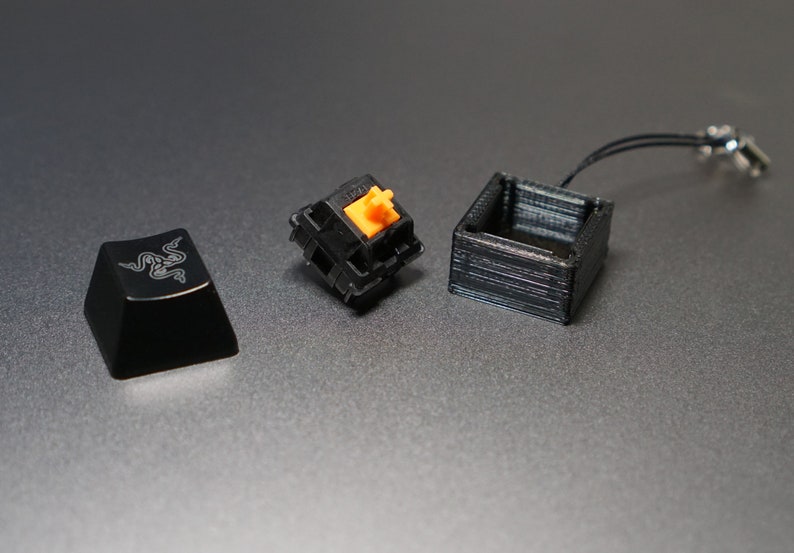

If you’re considering buying a mechanical keyboard for the first time, you’re probably seeking for a more gratifying typing experience. Tactile switches are my first choice for novices since they demonstrate how much fun mechanical switches can be to operate. These switches are excellent for typing and would also be suitable for gaming. Because of their adaptability, tactile switches are frequently utilised in the mechanical keyboard world, not only for novices. If you spend a lot of time typing, tactile switches are the way to go.Ĭlicky switches provide tactility as well, but they come with a loud clicking sound that can be annoying to individuals in close vicinity. Tactile switches are a terrific place to start if you want to convert to a mechanical keyboard, and they’ll quickly turn you into a fan. The switch under each key that supports your finger during the keystroke and registers each entry is referred to as a mechanical keyboard switch. Tactile switches are switches that provide a tactile bump as well as a relatively modest auditory click with each keystroke.Įach key on a mechanical keyboard has its own dedicated switch, resulting in high-quality, long-lasting keyboards with unique features like N-key rollover (being able to press multiple keys and once and everything will register). There are additional switch kinds (linear and clicky), but we’ll concentrate on tactile for now. When typing, tactile switches provide excellent feedback, letting you know that everything is in working order and that all of your keystrokes are being recorded. The characteristic tactile bump you feel when pushing a tactile switch gives it its name. They’re also immensely fulfilling and enjoyable to use. Tactile switches, more than any other mechanical switch, provide the finest feedback. These switches are meant to be heard, but not to the point of becoming distracting. When typing on them, the sound and feel make it easier to text precisely and without misclicks. Without needing to fully bottom out your keys, the tactile bump created is an excellent signal of when a keypress is registered. It might be difficult to locate the ideal tactile switch. We’ve put dozens of different switches to the test in order to find the optimal tactile switch. We’ll also go over their features, how long they last, and our impressions on how they feel and sound. We’ll go through why we picked each tactile switch and why we ranked them in the order we did. I’ve included all of the information you’ll need regarding tactile key switches in one spot, so you can make an informed decision on the most crucial component of your next mechanical keeb.
Linear clicky tactile upgrade#
There are a lot of alternatives to pick from, but how can you know which ones are the best? If you want to upgrade your brown switches, what should you look for?

Tactile switches provide a precise sensation without the noise. Today, we’ll go over the differences between tactile and linear switches, two of the most common switch kinds. With so many different switch brands and colours to choose from, it can be difficult to know which one is right for you. If you don’t understand the numerous switch types, navigating the world of mechanical keyboards might be challenging.

The various switch types are meant to appeal to a range of tastes by having a distinct typing sensation, sound, and actuation force. Whether you’re searching for a keyboard for gaming, work, education, programming, or writing, the switch you select can either help or hinder you. This switch, on the other hand, would be a horrible choice for someone who wishes to bring their keyboard to work or a library because the loud clicks would bother others! Some switches, for example, are loud and clicky, which a writer may prefer since it provides physical and aural feedback when pressing a key. There are various varieties of switches, but the three most common are linear, tactile, and clicky.Ĭlicky switches are the incredibly noisy variety I described before, and they’re clearly a unique option. These switches are enjoyable to operate and the noises are pleasurable (for you, not for others!). When pressed, they produce a tactile bump and a loud noise.
Linear clicky tactile how to#
It’s rather simple to determine whether or not clicky switches are right for you, but deciding between linear and tactile switches might be more difficult.Ĭontinue reading to discover more about these switches and how to utilise them effectively. Tactile switches are a lot of fun to use since the feedback is really natural and not too similar to the Clicky Switch. The tactile type switch is ideal for individuals who desire a somewhat rough typing experience as well as a slightly loud typing sound.


 0 kommentar(er)
0 kommentar(er)
